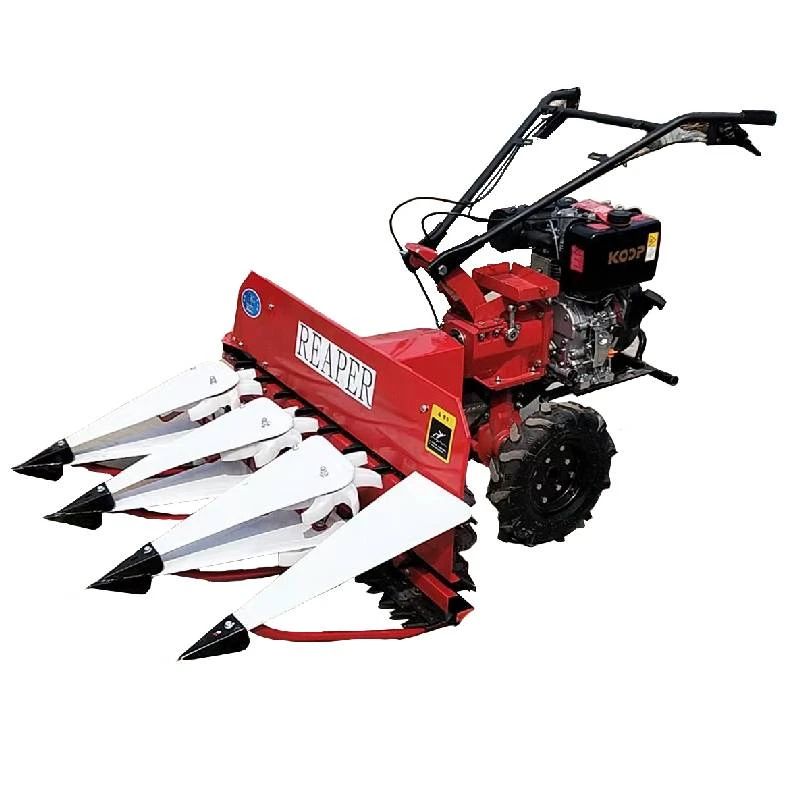Efficient Small Scale Grain Harvesting Solutions for Modern Farmers and Agricultural Practices
The Essential Role of Small Grain Harvesters in Modern Agriculture
In the realm of modern agriculture, the efficiency and effectiveness of harvesting technology play pivotal roles in ensuring crop yield and farmer profitability. Among the essential tools in this technological advancement is the small grain harvester. These specialized machines have revolutionized the way farmers cultivate and gather their crops, particularly in the context of small to medium-sized farms. This article explores the importance, advantages, and future trends surrounding small grain harvesters.
Understanding Small Grain Harvesters
Small grain harvesters are designed specifically for the harvesting of cereal crops such as wheat, barley, oats, and rye. Unlike larger combines, these machines are compact, making them ideal for smaller fields and varied terrain. Their design often incorporates features that enhance maneuverability and ease of use, allowing farmers to cover their land more efficiently without compromising the quality of the harvest.
The operational process of small grain harvesters typically involves gathering, threshing, and separating the grain from the chaff. This multi-functionality not only reduces the time taken to harvest but also minimizes the labor required, allowing farmers to focus on other essential aspects of agricultural management.
Advantages of Small Grain Harvesters
One of the primary advantages of small grain harvesters is their ability to work in diverse field conditions. Many small farms often have irregularly shaped fields with varying topography. The compact nature of these machines means they can navigate tight spots and steep inclines that larger equipment may struggle with, ensuring that every grain is harvested with minimal loss.
Furthermore, these harvesters are generally more affordable than larger combines, making them accessible for smaller-scale farmers. This democratization of harvesting technology empowers more farmers to invest in efficient harvesting solutions without incurring crippling debt. Additionally, many models are designed for ease of operation, reducing the need for extensive training and enabling farmers to work independently.
Small grain harvesters also contribute to better grain quality. Because they are engineered to minimize damage during the harvesting process, farmers can ensure that the grains retain their quality and market value. This is crucial in an agriculture market where quality can dictate pricing, making every harvest a critical opportunity for economic gain.
small grain harvester

Environmental Impact and Sustainability
As the world increasingly focuses on sustainability, small grain harvesters are becoming more efficient and environmentally responsible. Modern models are often equipped with technology that helps to reduce fuel consumption and lower greenhouse gas emissions. Some manufacturers are even exploring electric and hybrid options that align with global efforts to combat climate change.
Moreover, the precision offered by these machines allows for better planning of crop rotation and soil preservation strategies. By minimizing soil disturbance and optimizing harvest times, farmers can maintain healthier soil ecosystems, which is vital for future crop productivity.
Future Trends in Small Grain Harvesters
Looking ahead, the continued evolution of small grain harvesters is on the horizon, driven largely by technological advancements. The integration of precision agriculture technologies, such as GPS and IoT (Internet of Things), promises to enhance the efficiency and productivity of harvesting operations further. These technologies can provide farmers with real-time data on crop conditions and yield forecasts, allowing for more informed decision-making.
Additionally, automation and robotics are set to revolutionize the field. With the development of autonomous harvesters, farmers may soon be able to oversee their operations remotely, significantly improving labor efficiency and reducing operational costs.
Conclusion
In conclusion, small grain harvesters play an indispensable role in the agricultural landscape, particularly for small to medium-sized farms. Their ability to increase efficiency, reduce labor costs, and improve grain quality makes them a vital investment for farmers. As technology continues to advance, the future of small grain harvesters looks promising, poised to contribute to sustainable agricultural practices while meeting the growing demands of the global food supply. In a world where agriculture must adapt to changing conditions and expectations, these machines stand at the forefront of innovation, ensuring that farmers can thrive in an increasingly competitive market.
Latest news
-
When to Upgrade Your Old Forage HarvesterNewsJun.05,2025
-
One Forage Harvester for All Your NeedsNewsJun.05,2025
-
Mastering the Grass Reaper MachineNewsJun.05,2025
-
How Small Farms Make Full Use of Wheat ReaperNewsJun.05,2025
-
Harvesting Wheat the Easy Way: Use a Mini Tractor ReaperNewsJun.05,2025
-
Growing Demand for the Mini Tractor Reaper in AsiaNewsJun.05,2025
